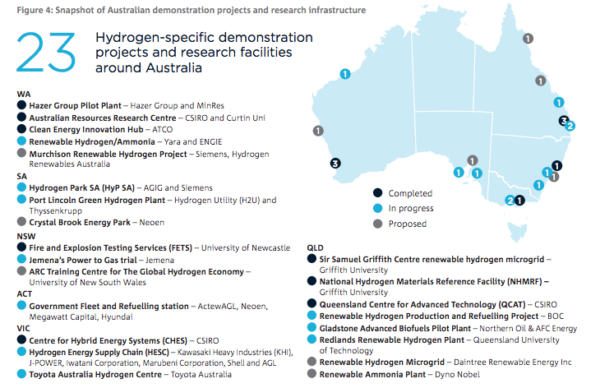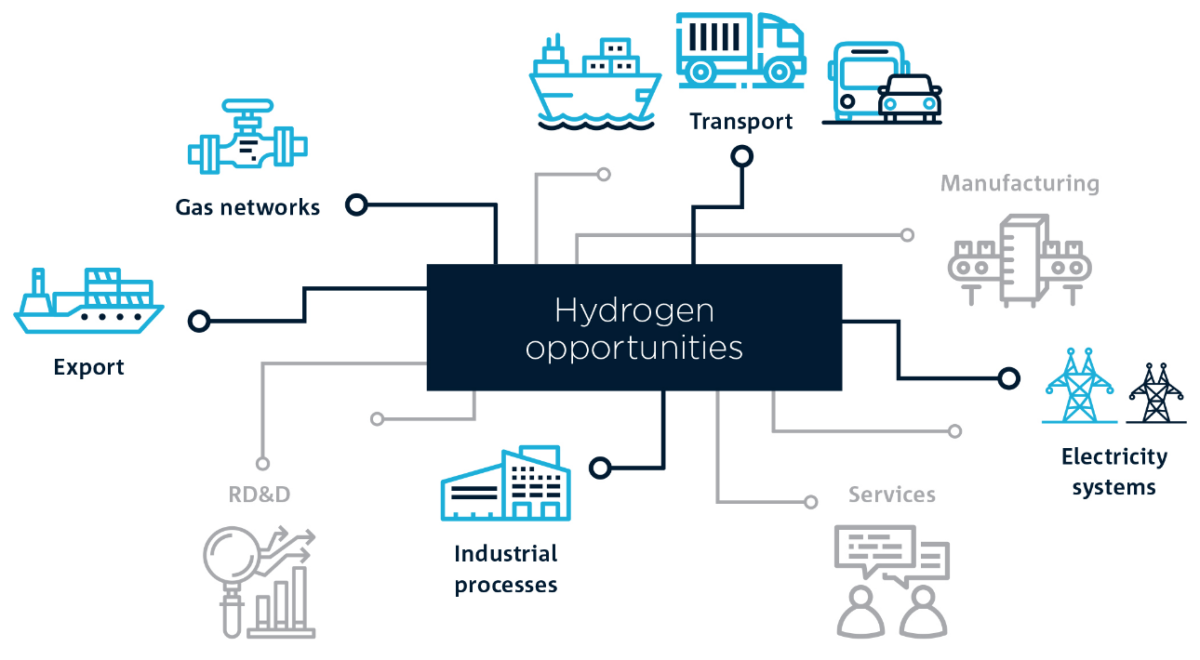Hydrogen produced by solar and wind-powered electrolysis has been widely described as Australia’s golden opportunity, but further investment in research is critical for the development of a lucrative new domestic industry, the Commonwealth Scientific and Industrial Research Organisation (CSIRO) finds.
In its latest report, Hydrogen Research Development & Demonstration (RD&D): Priorities and Opportunities for Australia, the national science agency finds investing in research could solve industry challenges to create five key national opportunities: hydrogen exports; integration of hydrogen into gas networks; transport; electricity systems; and industrial processes.
According to CSIRO, Australia must take these steps to translate its strong hydrogen research capability into a key pillar of the nation’s energy and export profile and realise a potential 7600 jobs and $11 billion a year by 2050 from the burgeoning industry. Presently, there are 23 institutions in Australia actively exploring hydrogen as well as another 23 hydrogen-specific demonstration projects and research facilities around Australia.

Australia’s H2 research leadership
The report argues that Australia has a strong RD&D (research, development and demonstration) ecosystem that can be leveraged to address challenges across the hydrogen industry value chain and support economic development in Australia and abroad. According to CSIRO, Australia is a leading country with respect to global publications in the area of hydrogen research. However, data suggest a weakness in converting research insights into patents and commercial opportunities.
“Australia’s diverse RD&D capability should be developed and strategically leveraged to collaboratively respond to global and domestic industry opportunities,” the report states. “Together, this diversity will help foster near-term and breakthrough technologies and create new knowledge that helps the global industry develop.”
CSIRO Research Director Dr Patrick Hartley said CSIRO was on a mission to bring together industry, government and other research organisations to fast-track emerging hydrogen technologies. “This isn’t limited to the domestic industry development – we’ll link Australian expertise with international projects,” he said.
Whilst many market activation challenges will be addressed through global hydrogen industry developments, CSIRO points to the potential to accelerate this through RD&D and help stimulate demand. “Importantly, solving the challenges identified can have a multiplier effect that boosts demand for hydrogen – particularly in large scale industrial settings – and encourages further hydrogen supply cost reductions through improvements in efficiency and economies of scale,” Hartley said.
Last year, CSIRO released a National Hydrogen Roadmap that stated the development of a hydrogen export industry represented a significant opportunity for Australia and a potential ‘game-changer’ for domestic industry and the broader energy sector due to associated increases in scale. It also found an economically-sustainable domestic and export hydrogen industry could soon be a reality.
Since then, hydrogen research conducted by CSIRO has secured financial backing from ARENA as part of a $22.1 million funding round to boost national research and development projects in the field. The science agency also entered a $20 million partnership with iron ore giant Fortescue Metals Group involving a five year agreement to fund and support select CSIRO technologies in the hydrogen space.
CSIRO’s newest report was developed in parallel with Australia’s National Hydrogen Strategy and will support the implementation of the strategy, which is expected to pave the way for a hydrogen economy that would enhance Australia’s energy security, create jobs and build an export industry valued in billions.
The report comes as Australia’s largest gas distributor Australian Gas Networks starts construction of its pioneering hydrogen production facility, Hydrogen Park South Australia (HyP SA). Located at the Tonsley Innovation District, south of Adelaide, the facility will integrate what is billed as Australia’s biggest electrolyser of its kind and produce green hydrogen which will be blended with natural gas and supplied to nearby homes and businesses via the existing gas network.
This content is protected by copyright and may not be reused. If you want to cooperate with us and would like to reuse some of our content, please contact: editors@pv-magazine.com.









By submitting this form you agree to pv magazine using your data for the purposes of publishing your comment.
Your personal data will only be disclosed or otherwise transmitted to third parties for the purposes of spam filtering or if this is necessary for technical maintenance of the website. Any other transfer to third parties will not take place unless this is justified on the basis of applicable data protection regulations or if pv magazine is legally obliged to do so.
You may revoke this consent at any time with effect for the future, in which case your personal data will be deleted immediately. Otherwise, your data will be deleted if pv magazine has processed your request or the purpose of data storage is fulfilled.
Further information on data privacy can be found in our Data Protection Policy.